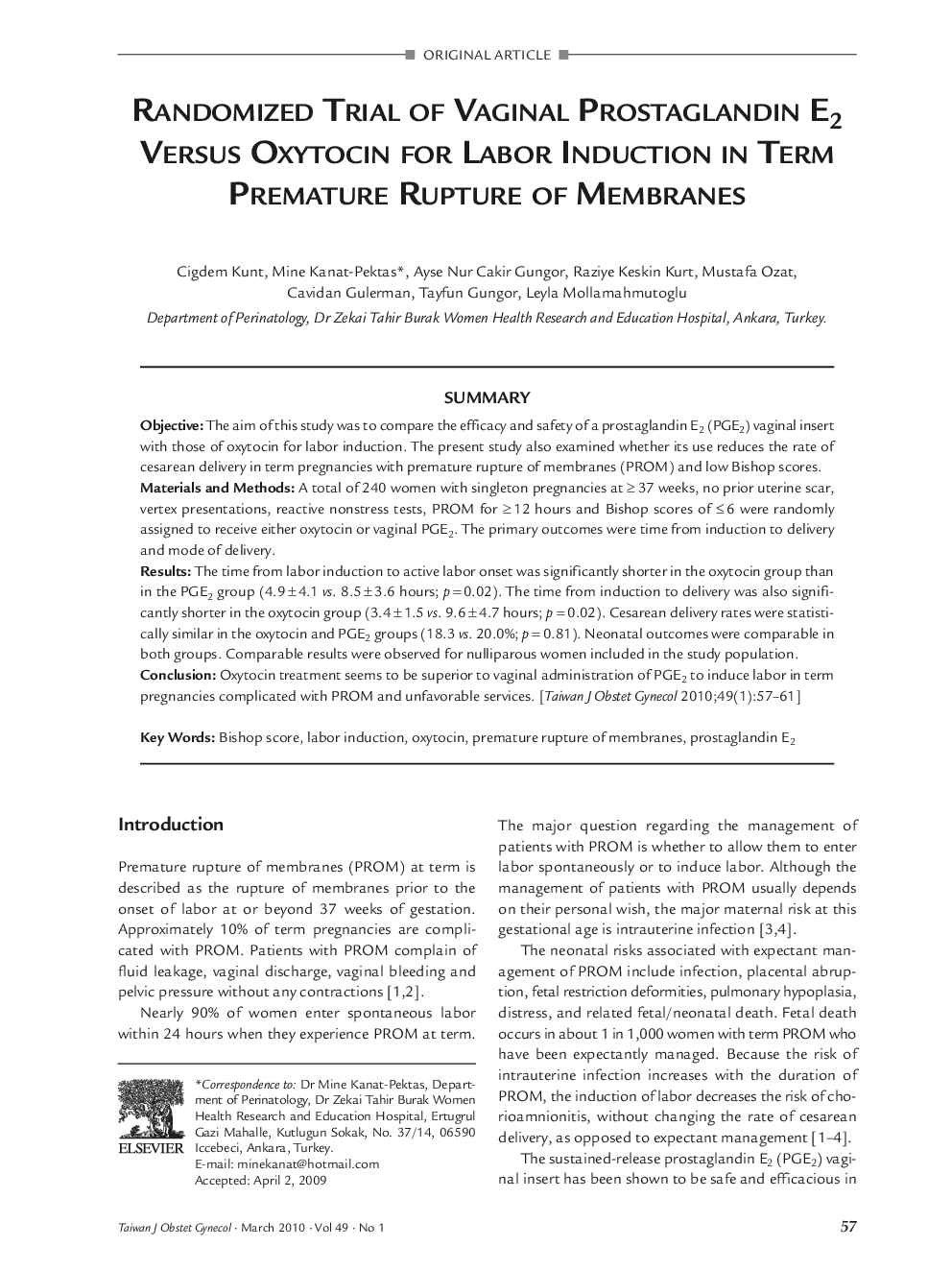| Article ID | Journal | Published Year | Pages | File Type |
|---|---|---|---|---|
| 3976037 | Taiwanese Journal of Obstetrics and Gynecology | 2010 | 5 Pages |
SummaryObjectiveThe aim of this study was to compare the efficacy and safety of a prostaglandin E2 (PGE2) vaginal insert with those of oxytocin for labor induction. The present study also examined whether its use reduces the rate of cesarean delivery in term pregnancies with premature rupture of membranes (PROM) and low Bishop scores.Materials and MethodsA total of 240 women with singleton pregnancies at ≥ 37 weeks, no prior uterine scar, vertex presentations, reactive nonstress tests, PROM for ≥ 12 hours and Bishop scores of ≤ 6 were randomly assigned to receive either oxytocin or vaginal PGE2. The primary outcomes were time from induction to delivery and mode of delivery.ResultsThe time from labor induction to active labor onset was significantly shorter in the oxytocin group than in the PGE2 group (4.9 ± 4.1 vs. 8.5 ± 3.6 hours; p = 0.02). The time from induction to delivery was also significantly shorter in the oxytocin group (3.4 ± 1.5 vs. 9.6 ± 4.7 hours; p = 0.02). Cesarean delivery rates were statistically similar in the oxytocin and PGE2 groups (18.3 vs. 20.0%; p = 0.81). Neonatal outcomes were comparable in both groups. Comparable results were observed for nulliparous women included in the study population.ConclusionOxytocin treatment seems to be superior to vaginal administration of PGE2 to induce labor in term pregnancies complicated with PROM and unfavorable services.
